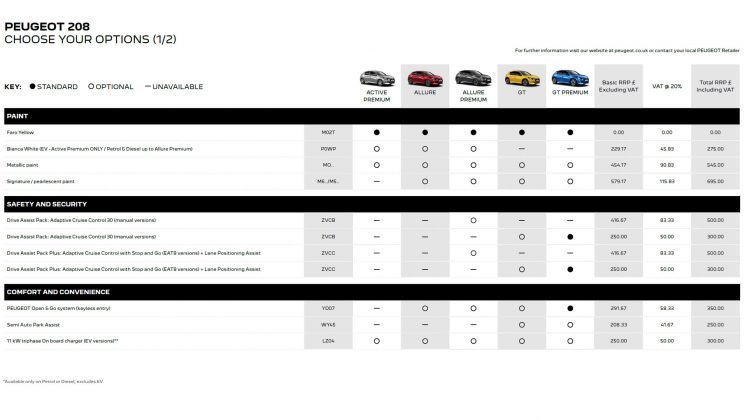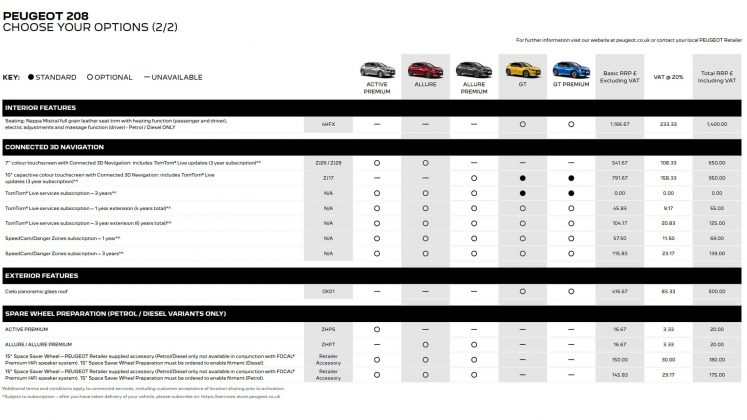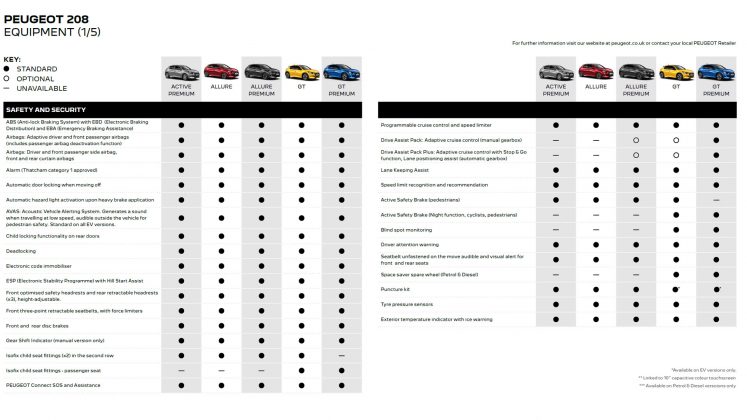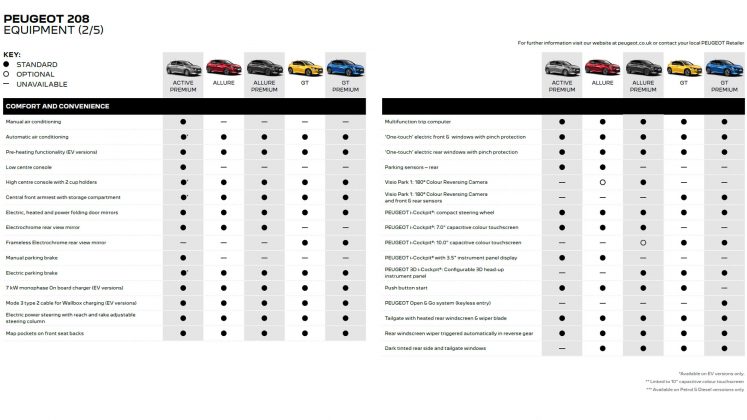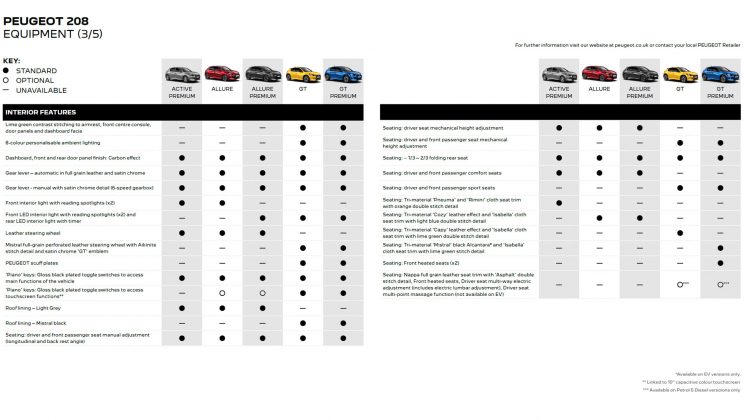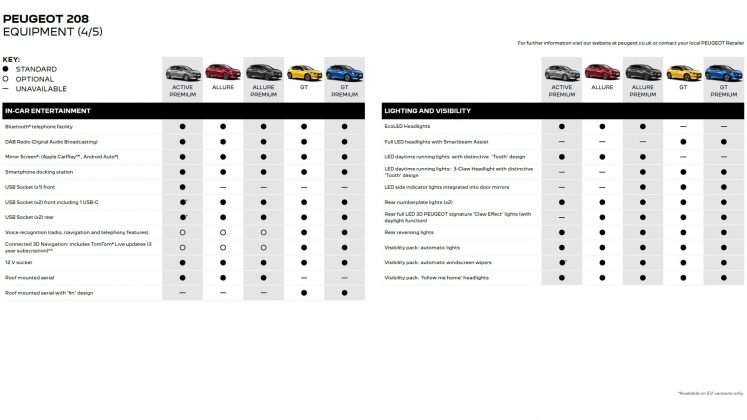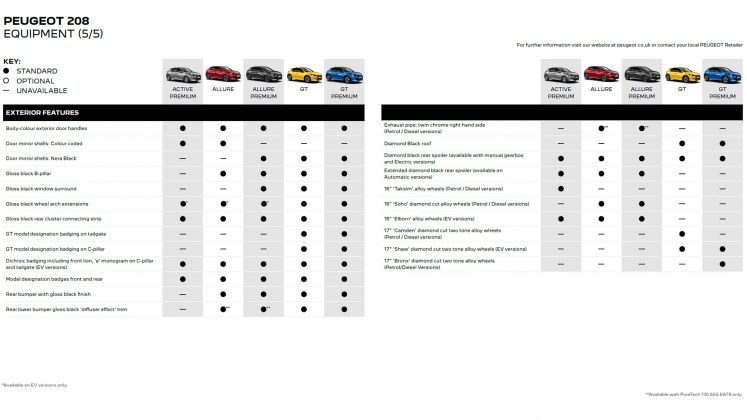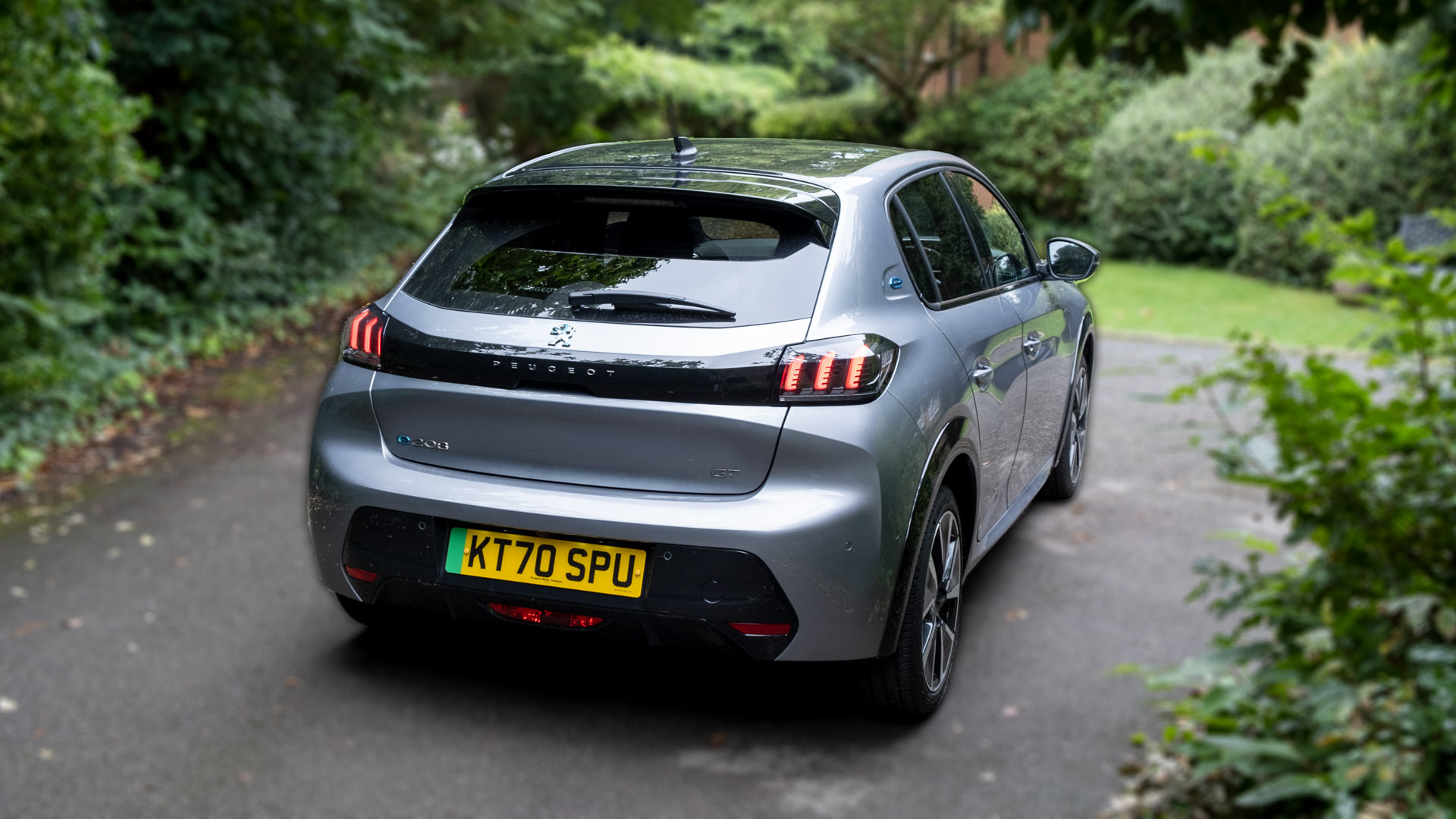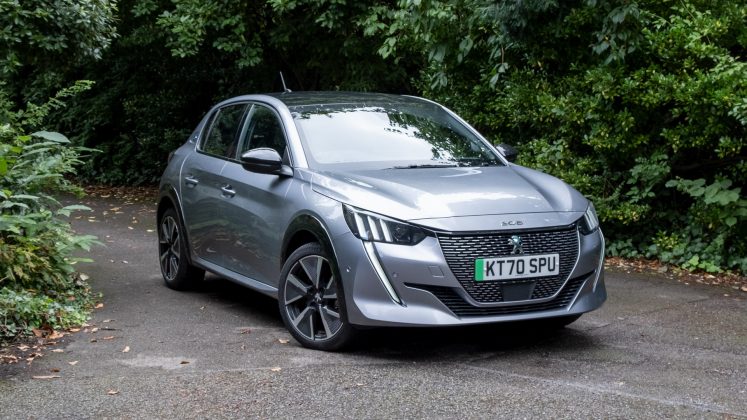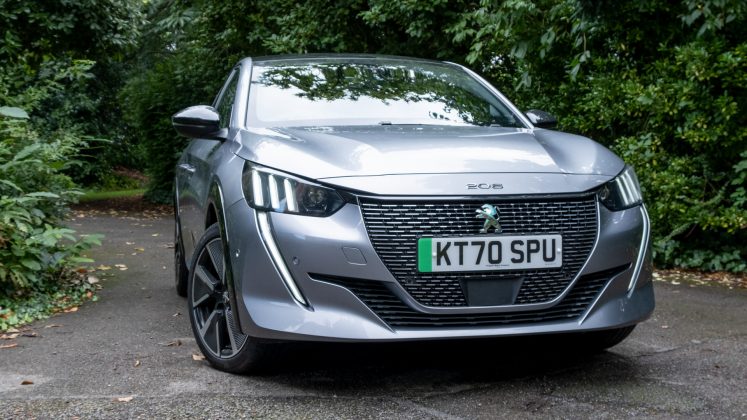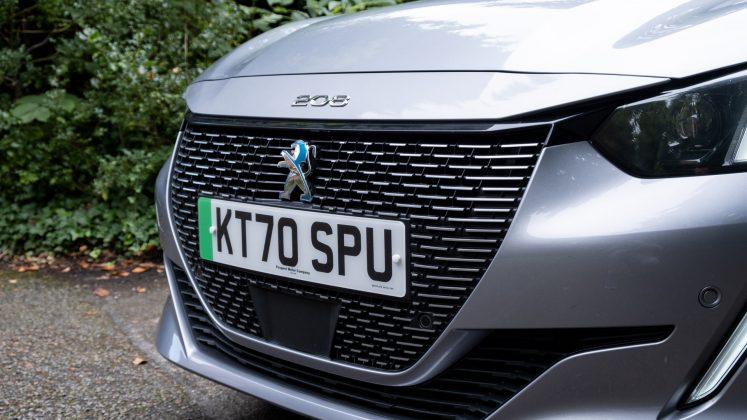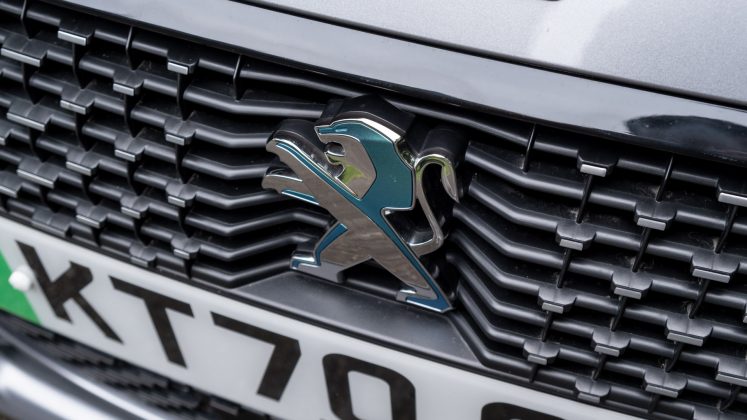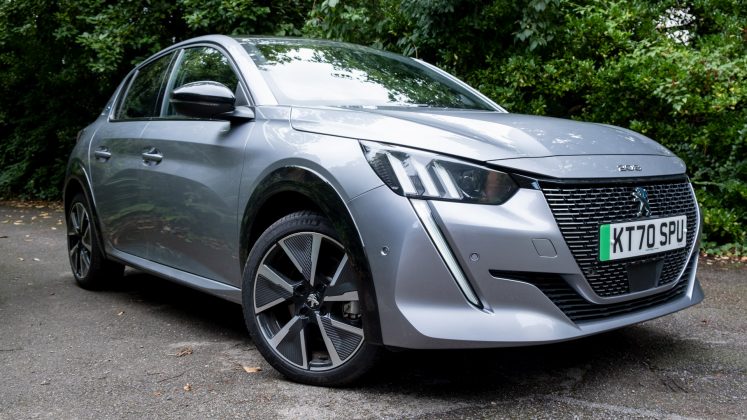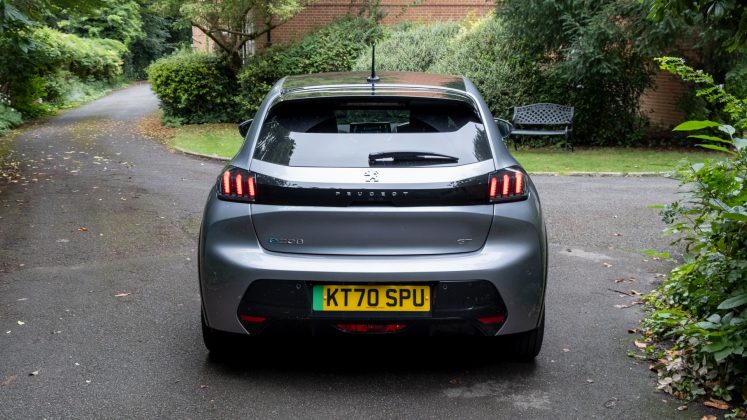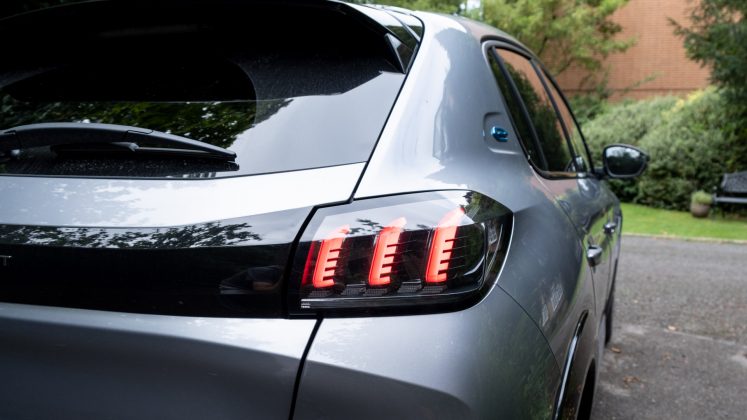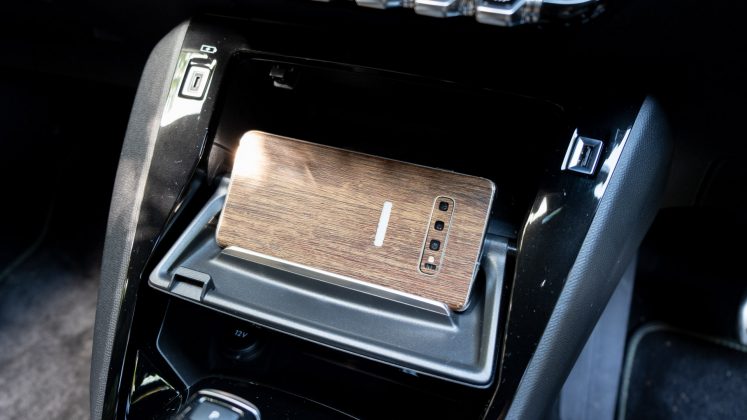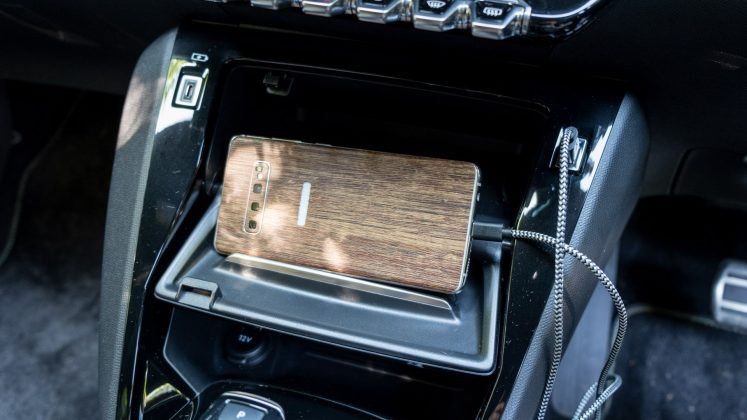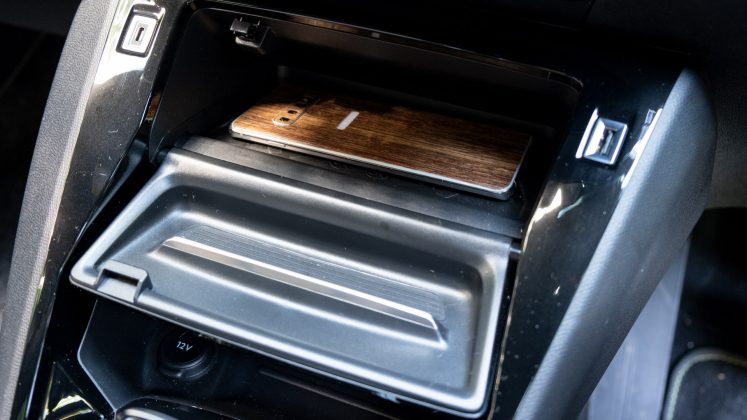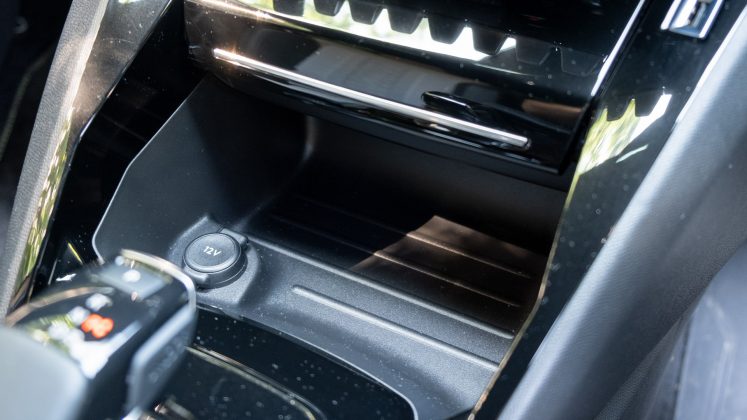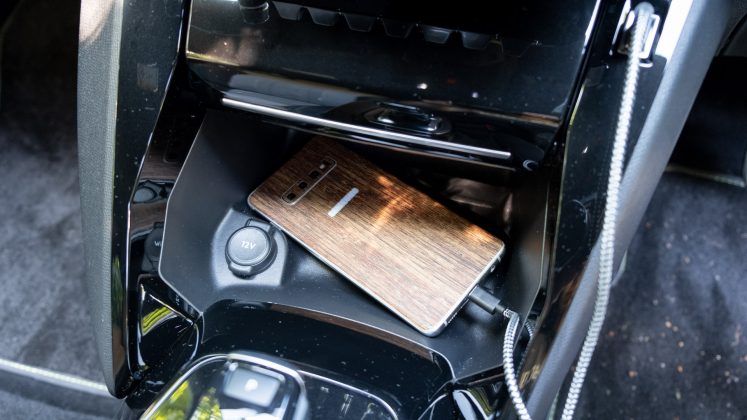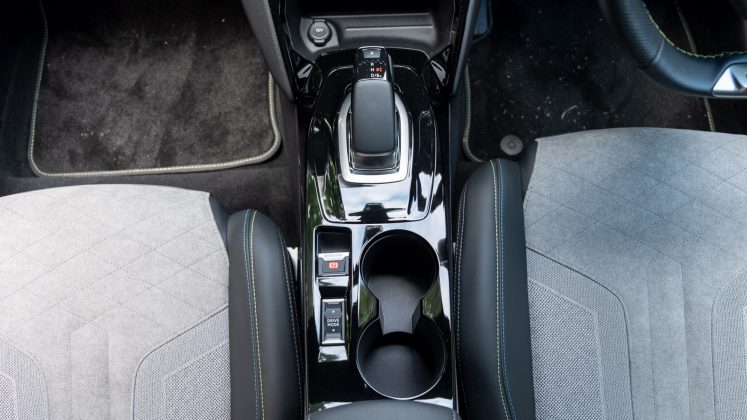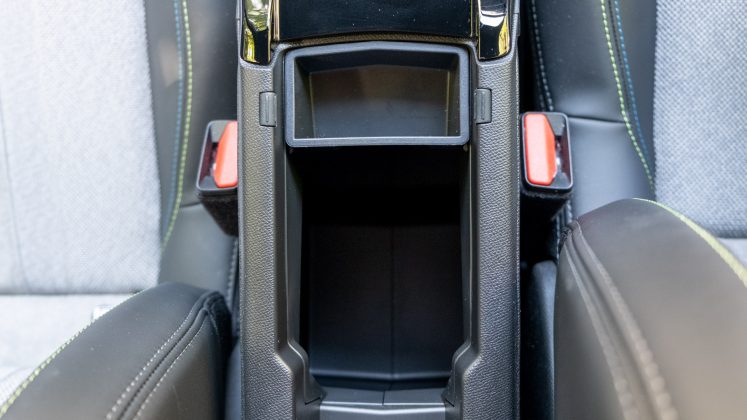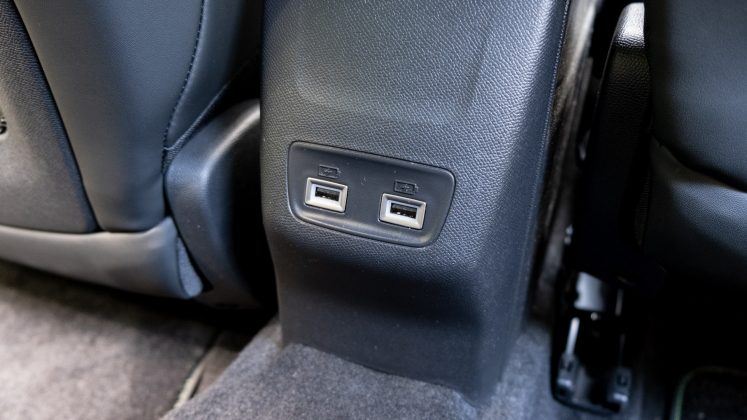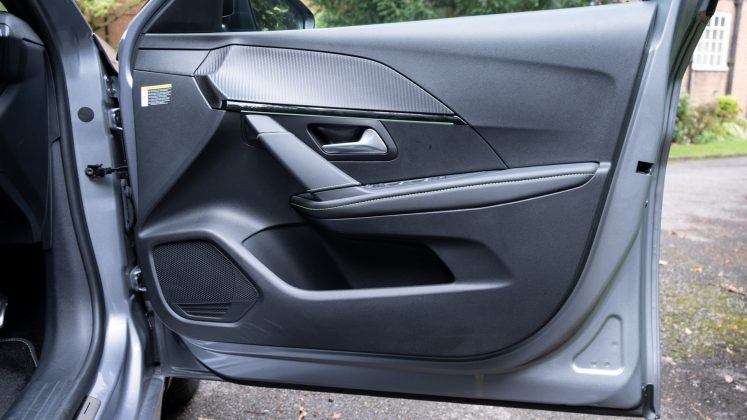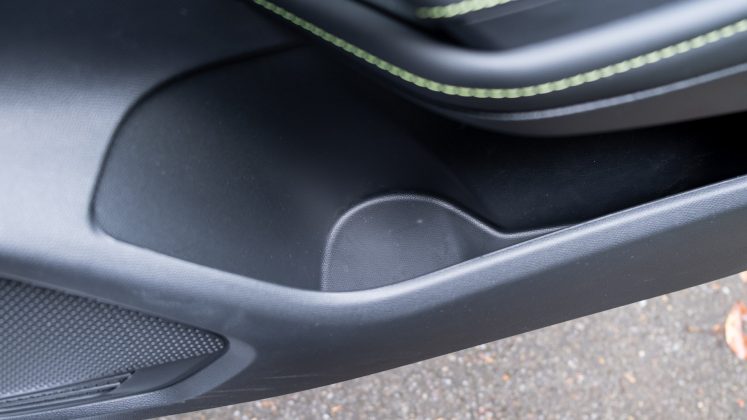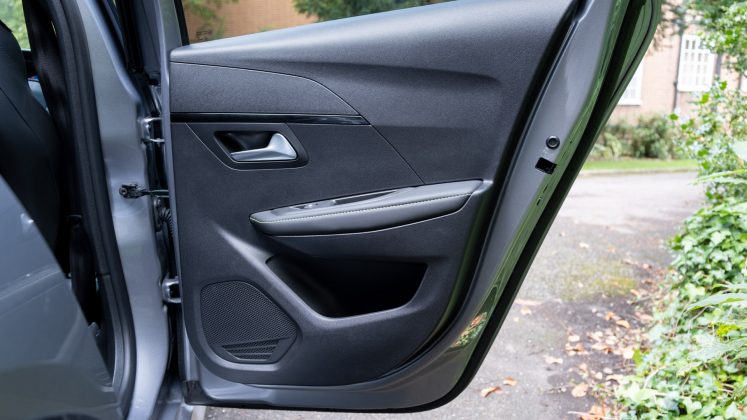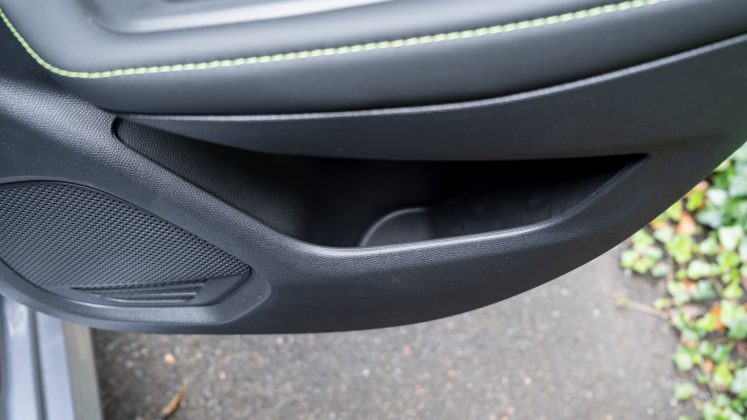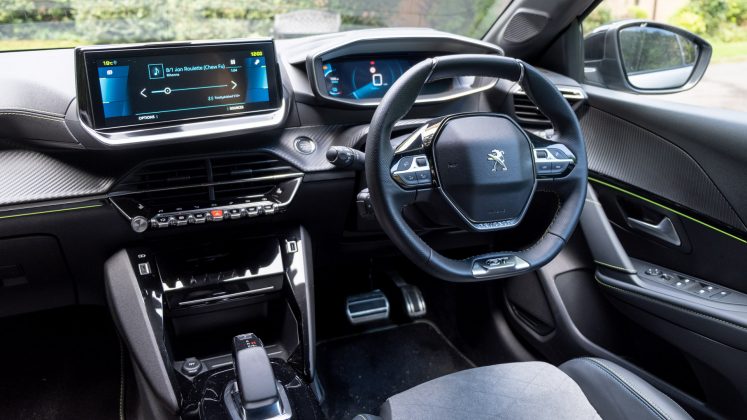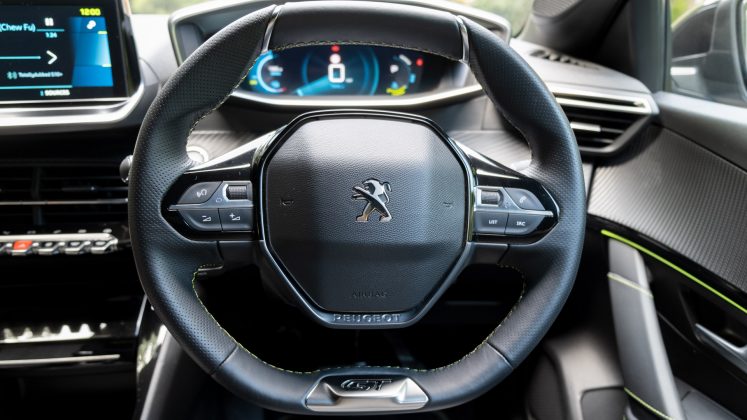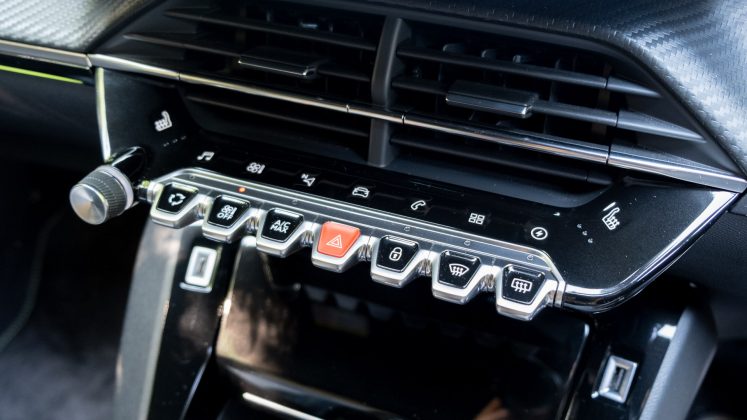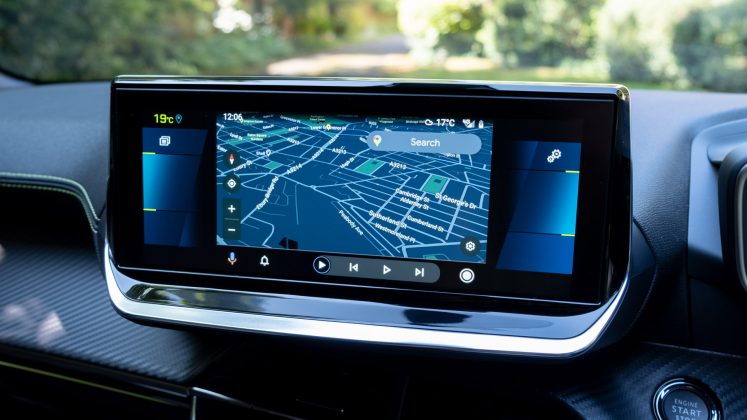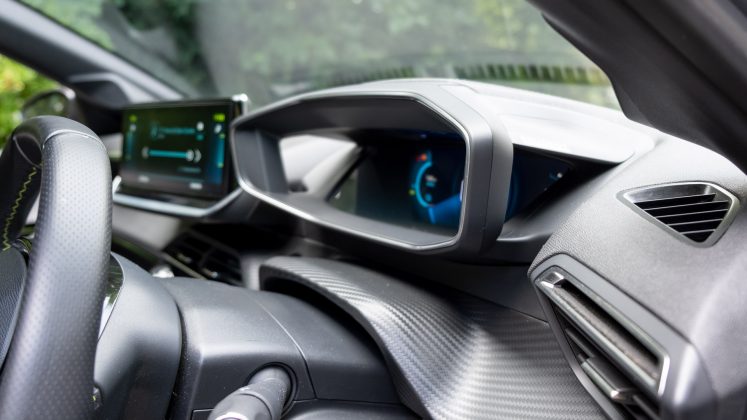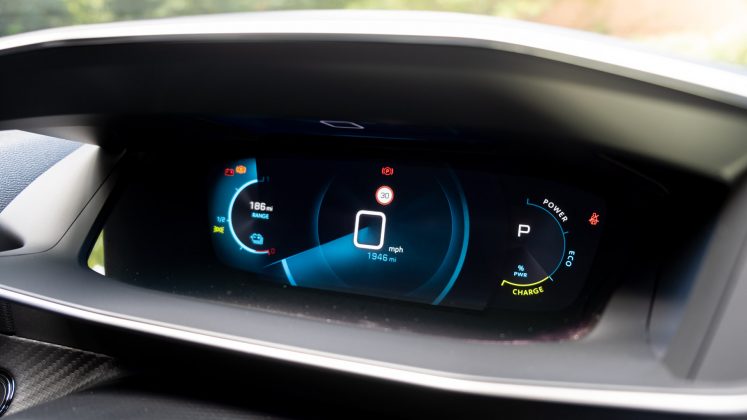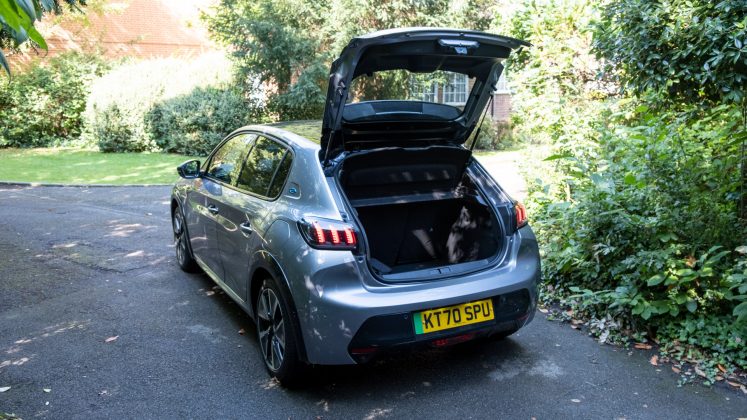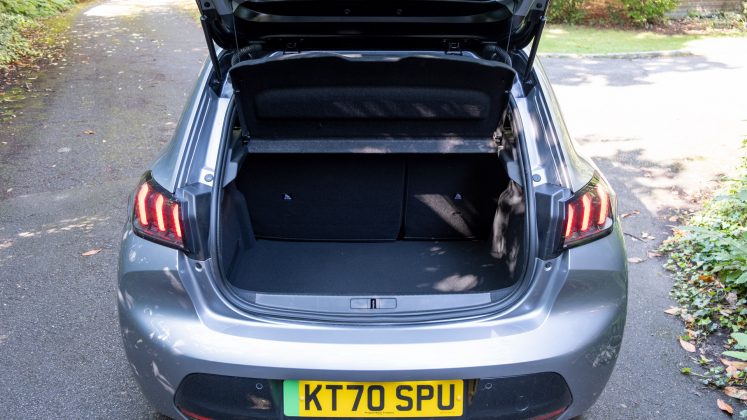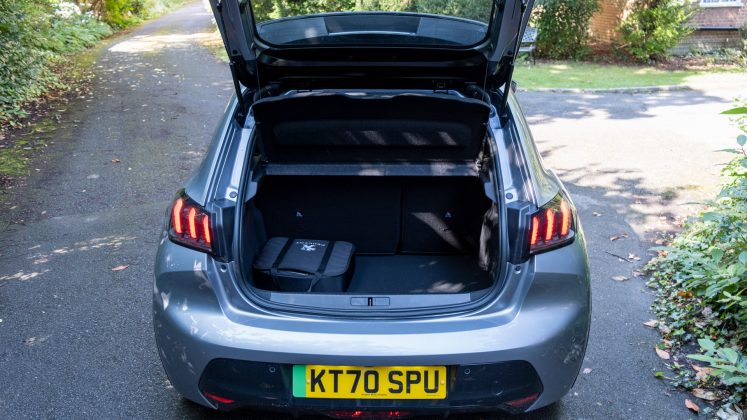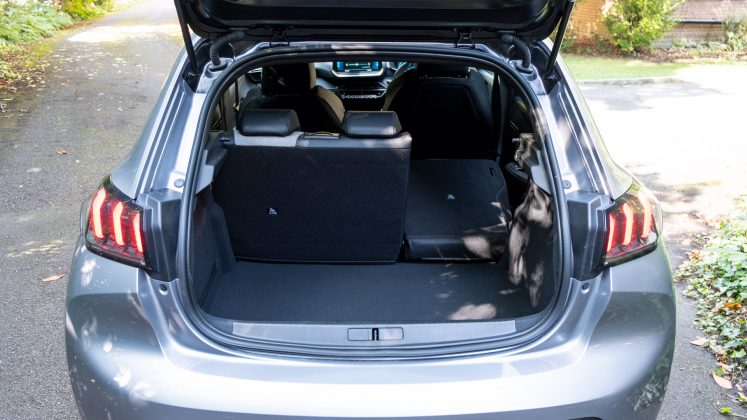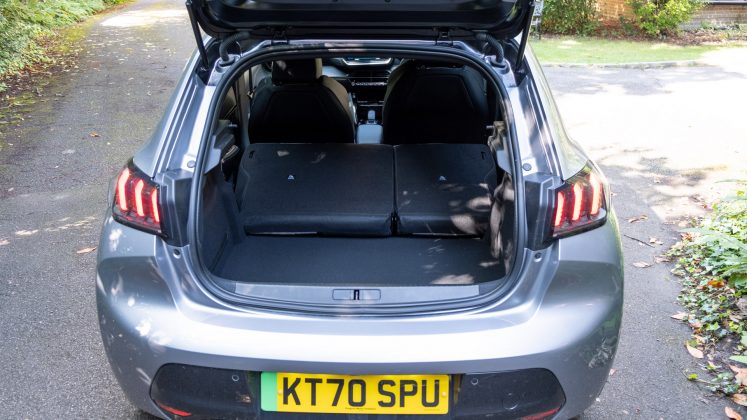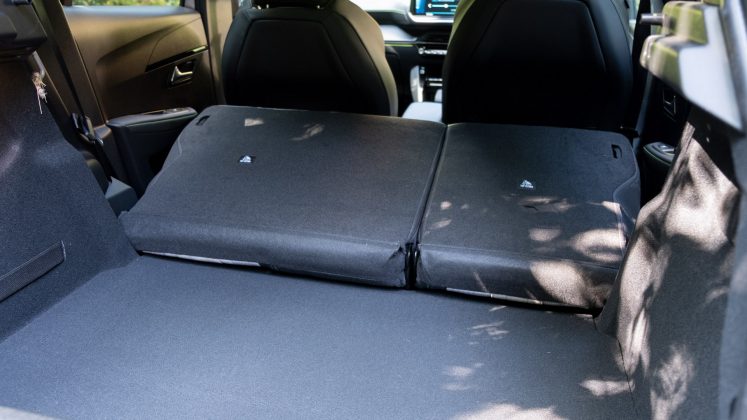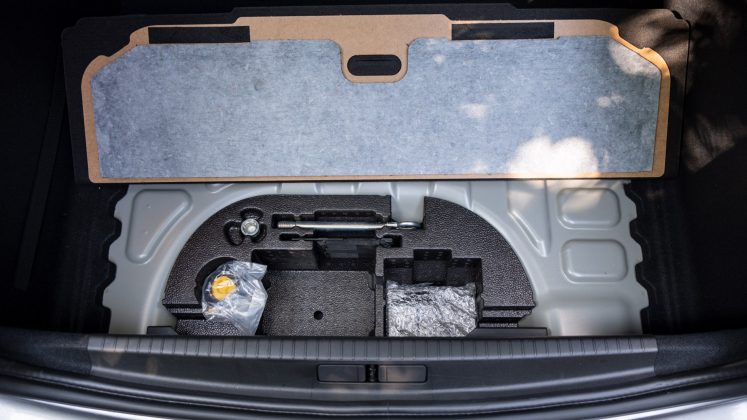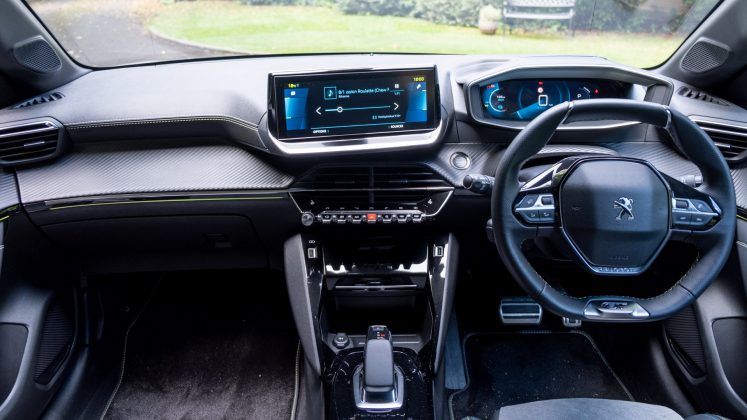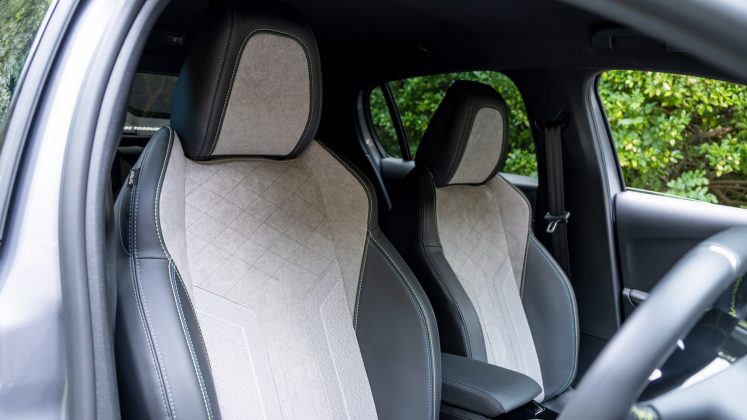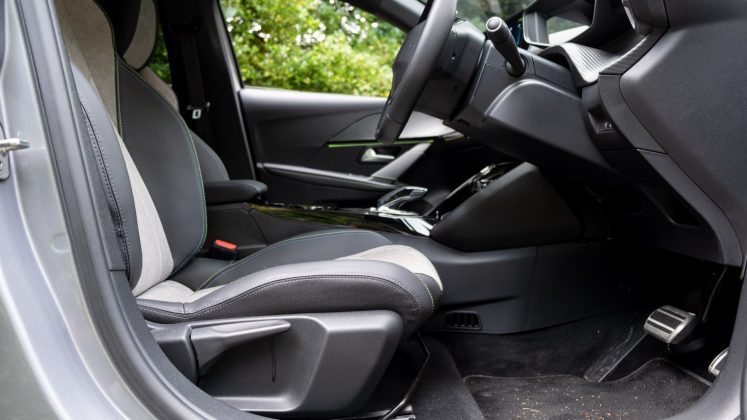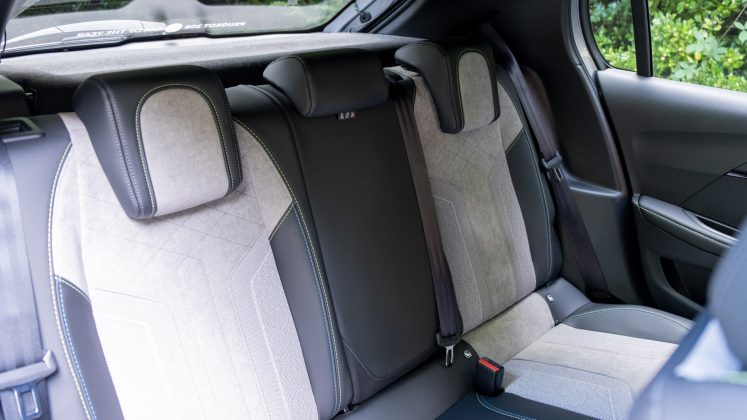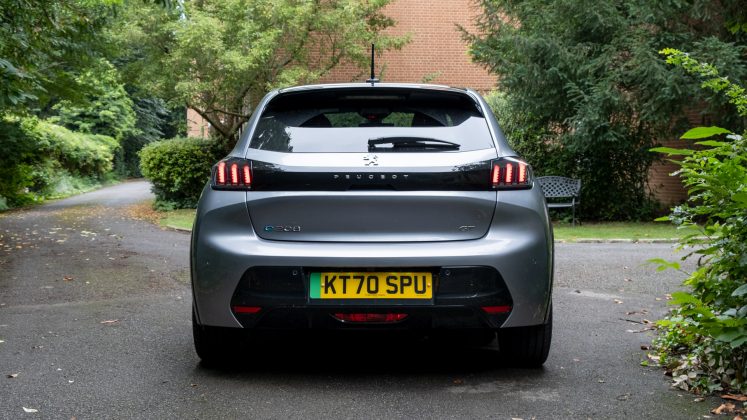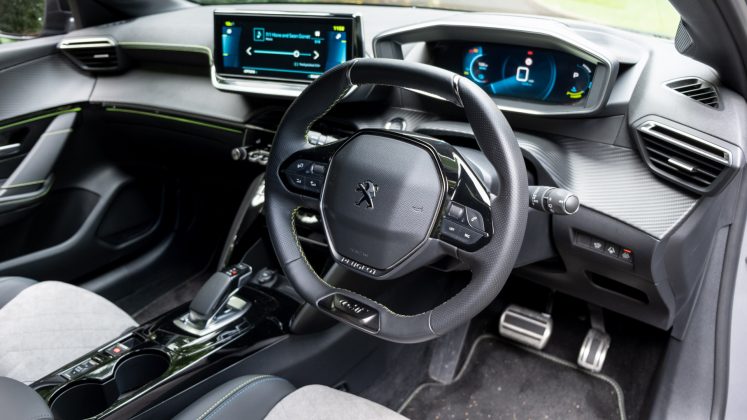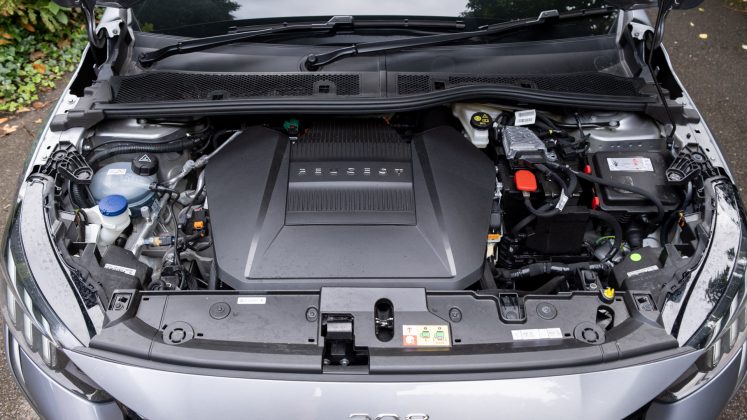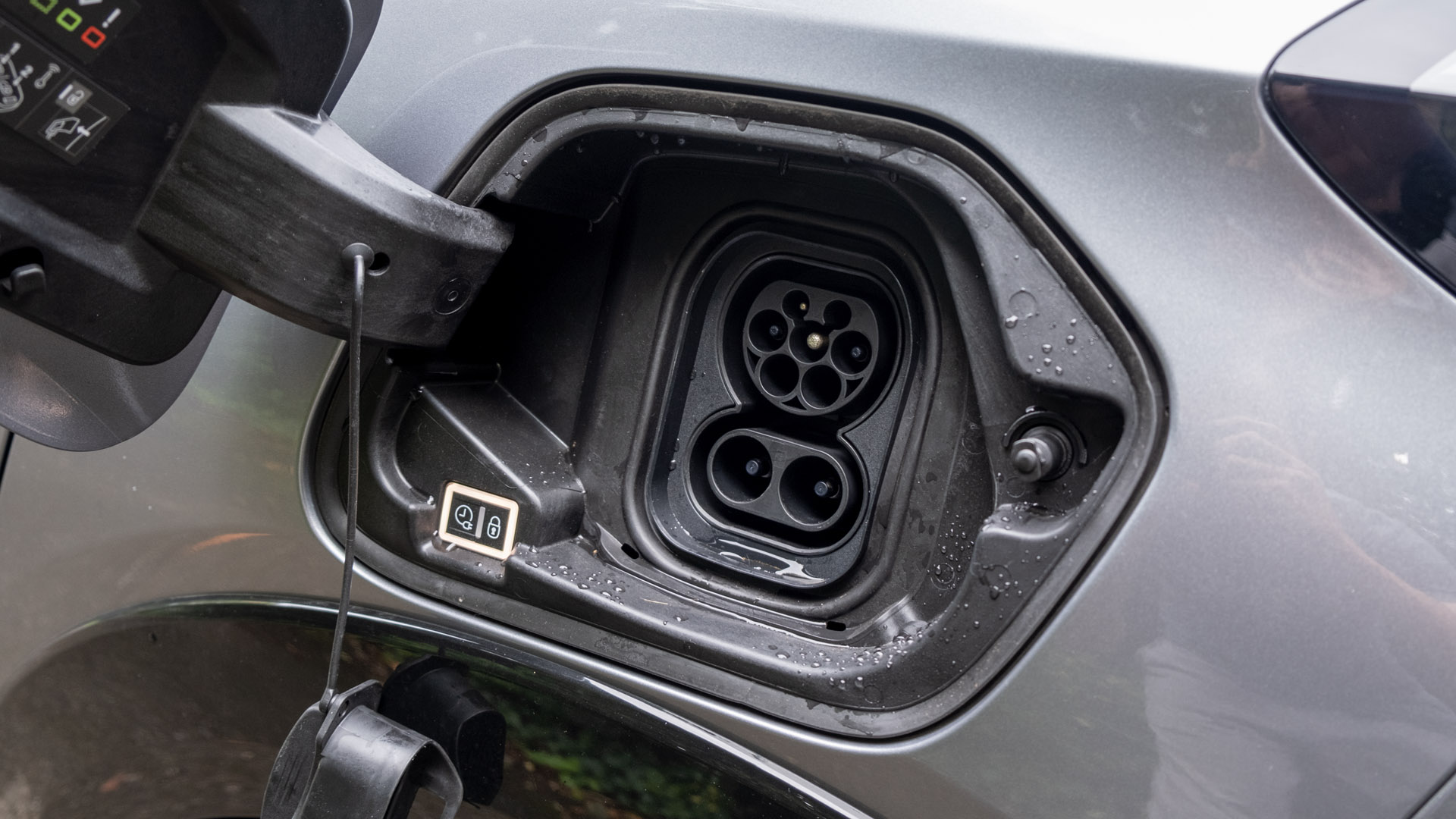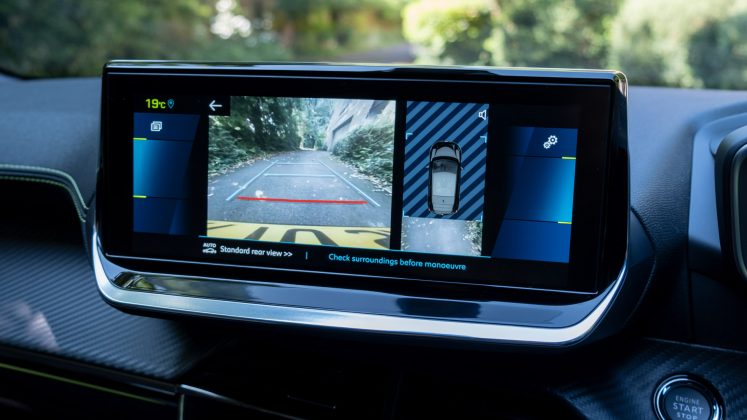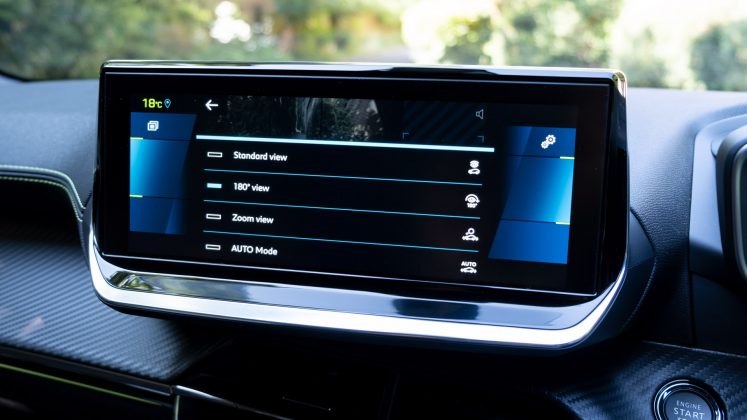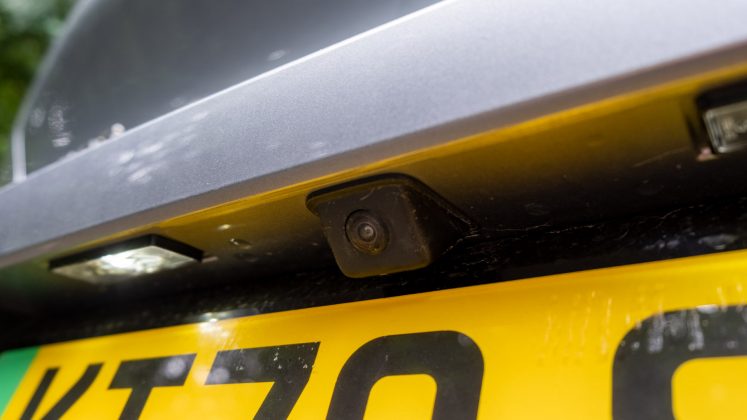Peugeot’s second-generation 208 and e-208 were unveiled at the Geneva Motor Show in 2019. Much like the Vauxhall Corsa-e, another EV from the Stellantis Group, the fully electric model was heavily based on its petrol and diesel counterparts – only the powertrain and a few small exterior tweaks differentiated it from its internal combustion engine (ICE) siblings.
Despite surpassing expectations in 2019, in this review we’ll see how the vehicle compares to other electric cars that have now inundated the market.
If you’d prefer to watch a review of the Peugeot e-208, head on over to our YouTube channel.
Peugeot e-208 price & competition
Let’s start by talking about its asking price. The e-208 starts from £27,225 for the Active Premium model, making it £6,865 dearer than the cheapest automatic 1.2-litre petrol equivalent; granted there are some differences between the two vehicles, whereby the electrified model has 136 hp (100 kW) of power as opposed to the 74 kW (99 hp) on offer from the pure petrol variant.
Find the best Peugeot e-208 deals
Now, very much like the petrol and diesel variants, the electric model is sold in a few different trims: Active Premium, Allure, Allure Premium, GT and the model on review, the GT Premium – by clicking on the images below, you’ll be able to see what comes as standard with each trim:
As you’ll be able to see, all the fully electrified trims share the same powertrain, operate on a front-wheel drive system, can attain 62mph in a quoted 8.1 seconds, have a WLTP range of 217 miles from the 50 kWh battery pack and support a 100 kW rapid DC charge meaning the vehicle can get to 80% in just 30 minutes.
Buy a car phone mount on Amazon (Affiliate)
As for its competition, there are a plethora of all-electric vehicles on the market: the rapid Tesla Model 3 costs £42,990; the sporty BMW i3 is £33,805; the well-rounded VW ID.3 from £30,935; the practical Hyundai Ioniq Electric starts from £30,550; the spacious Renault Zoe starts from £27,495; the comfy Nissan Leaf at £25,995; the tech-focused Honda e at £28,215; the familiar-looking Vauxhall Corsa-e at £26,390; the stylish Mini Electric at £26,000; the bite-sized Volkswagen e-up! starts from £23,555 with its near-identical sibling, the Seat Mii Electric, coming in at £22,800; the cute Fiat 500 Electric at £20,995, and the smallest EV, the Smart EQ Fortwo, which starts from £19,200.
Read next: Volkswagen e-up! review: A bite-sized electric car
Peugeot e-208 exterior review
Despite facing stiff competition, we find the exterior design of the e-208 very alluring, and no, that’s not a pun. The aesthetics of the car are very similar to that of the e-2008 SUV that we previously reviewed on TotallyEV. Indeed, both its front and rear profile are stylish.
However, one should note that the model on review is the GT Premium, which features 17″ ‘Shaw’ diamond cut two-tone alloy wheels, a diamond black roof and full LED headlights with Smartbeam Assist – the non-premium GT variant also has these stylish additions. However, the Active Premium, Allure and Allure Premium trims come fitted with 16″ ‘Elborn’ alloy wheels and EcoLED headlights, instead – these don’t portray the same stylish appeal.
As for its colour, it’s available as standard in ‘Faro Yellow’. Should you want to change it, you have the following options: the solid Bianca White (available with Active Premium only) costs £275; the metallic Cumulus Grey (pictured) and Nera Black cost £545; while the Elixir Red, Vertigo Blue and Pearlescent White are available in the Allure Premium, GT and GT Premium trims cost £695.
Speaking of colour, the Peugeot badge has a dichroic finish, which means it changes colour as you shift from left and right – it’s a small but cool touch by the French automaker.
Read next: Mini Electric review: Style over substance?
Peugeot e-208 interior review
Moving inside the cabin, the EV is almost indistinguishable from its ICE counterparts, which gives the e-208 that familiar look and feel. Here, we’re particularly fond of the steering wheel that has a flat top and bottom design, making the car easy and fun to handle. On it, you’ll also find physical buttons and behind it two familiar-feeling stalks.
By the centre console, there’s an electronic gear selector, a lever to activate and deactivate the electronic handbrake, and a drive mode selector. Ahead of these, you’ll find a 12V charging socket, a place to store your valuables and a clever pull-down smartphone holder; and should you want your phone to be more secure, one can use the non-slip pad that resides within this area.
Read next: The best dash cams to mount inside your vehicle
Moving up the dashboard, we find there are a few odd design implementations. Here, the levers act as physical switches, while just behind them reside capacitative touch buttons that provide a shortcut to certain settings on the infotainment system. This semi-modern and old-school approach seems as if the automaker was caught in two minds; we would have solely preferred a flurry of physical buttons. Nevertheless, we do like the inclusion of the volume knob, which makes it far easier to change the media volume as opposed to the capacitive touch slider that one would find on the VW ID.3.
As we move our attention to technology, it’s great to see Peugeot supports both Android Auto and Apple CarPlay through a USB connection – a Type-C and Type-A port can be found toward the centre console. Should you wish to connect wirelessly, Bluetooth is available with the SBC and AAC codecs supported. In terms of its audio configuration, the e-208 houses six speakers. If you’d like to hear how the system performs, watch our dedicated review of it on YouTube.
Onto the infotainment system, we feel that it’s pretty poorly laid out. Menus and sub-menu structures don’t naturally flow, where it can be hard to quickly adjust certain settings. The built-in navigation also feels clunky and isn’t anywhere near as responsive as the mobile operating systems that are on offer. There are also two permanent bars that reside on either side of the centre display, which eat away at the size of the display – from map view to the reversing camera, the 7″ or 10″ (standard in the GT trims) screen isn’t fully utilised.
Elsewhere, third-party navigation data doesn’t integrate with the vehicle’s instrument cluster; whereas some of Peugeot’s rivals allow turn-based data to be shown on the smaller screen or in some cases, the Head-up Display (HUD). The latter is similarly omitted from the e-208’s design. Instead, in the Allure Premium, GT and GT Premium trims, the automaker has chosen to include a configurable 3D instrument panel – in the other trims, you get a standard 3.5″ display, instead; with the former being on review, we find the interface a little pointless.
The 3D holographic effect doesn’t add much dynamism and further is rather slow to respond to user input – much like the centre-weighted display, it takes a bit more time than it should to respond. Still, the instrument cluster does provide all the key driving information one might need.
Read next: Fiat 500 Electric review: Best small electric car?
Peugeot e-208 storage review
Aside from the centre console area, there’s some more storage by the centre armrest, which allows you to store a small-sized purse or wallet – the removable silicone bay also provides a convenient place to store loose change or the remote. As for the door bins, the front two are large enough to fit a 500ml bottle alongside some small valuables, but the two at the rear are a little more limited in space.
As for boot capacity, the e-208 offers 311 litres with the seats up and extends up to 1,106 litres with them propped down. Here’s how it stacks up to its all-electric rivals: Nissan Leaf (435/1,161 litres); Hyundai Ioniq Electric (357/1,417 litres); VW ID.3 (385/1,267 litres); Renault Zoe (338/1,225 litres); Vauxhall Corsa-e (267/1,076 litres); VW e-up! (251/951 litres); Seat Mii Electric (251/923 litres); Mini Electric (211/731); Fiat 500 Electric (185/550 litres); Honda e (171/571 litres); Smart EQ Fortwo (260/360 litres).
Unfortunately due to the e-208 being based on the non-electrified model, it means there’s no underfloor compartment storage for your charging cables nor any frunk (front boot) space, either – the charging cables will take up some space in the boot. Elsewhere, when the 60:40 split-folding seats are brought down, they don’t fold flat. This can be an annoyance for those who transport larger goods and equally, with the lack of a ski-latch, it can be inconvenient to transport elongated valuables.
Read next: Smart EQ Fortwo review (2021 Facelift): The best city car?
Peugeot e-208 comfort review
Onto comfort, the Peugeot is somewhat of a mixed bag. On one hand, the cabin noise is kept to a minimum, all five seats are comfortable on lower back muscles and the front two are manually adjustable (electronically and heated on the GT trims).
While on the other, the rearview mirror obstructs frontal view for taller drivers, the rear seats are diagonally wedged which means rear occupants won’t want to be sat in them for long periods of time, there’s no pull-down rear armrest, and there’s very little space at the back of the cabin where 6-foot 2-inches (188cm) might feel henned in.
Read next: Renault Zoe review: Best electric family car?
Peugeot e-208 performance review
Despite the car’s comfort being hindered by the e-208’s size, its compact nature does have a positive effect on the vehicle’s handling characteristics. It’s plenty of fun to drive, where we’d go as far as saying that it’s one of the best-feeling front-wheel drive (FWD) EVs we’ve tested to date; it goes toe-to-toe with the rear-wheel drive (RWD) VW ID.3 and Honda e, and provides an exciting driver’s feel that can be likened to the FWD Mini Electric.
In part, it’s due to the vehicle’s size but also the small-sized steering wheel. Its go-kart-like design makes you feel in total control and allows you to rope the vehicle from left to right in a swift fashion. Elsewhere, its slightly stiffened suspension setup gives you confidence when cornering at speed but does hinder the inner-city driving experience, as you’ll feel the odd pothole and speed bump.
As for raw performance, its front-mounted motor dispatches 100 kW (136 hp) of power, 260 Nm of torque and can get to 60mph from a standstill in a tested 8.09 seconds. Top sped is limited to 93mph. Suffice to say it’s pretty nippy, but won’t set your world alight in comparison to other fully electric vehicles that push toward the 7-second mark, instead.
Find the best Peugeot e-208 deals
Nevertheless, the e-208 isn’t marketed toward boy or girl racers, instead, we feel it’s better suited for those who have small-sized families – so, how much range can one achieve from Peugeot’s 50 kWh battery pack. In our mixed driving tests, we attained 180 miles. This makes it a better pick over the Honda e (80-90 miles); Mini Electric (100-110 miles); Volkswagen e-Up! and Seat Mii Electric (120-140 miles); the Vauxhall Corsa-e (130-140 miles); the Hyundai Ioniq Electric (140-150 miles); and the Fiat 500 Electric (140-160 miles).
However, one should consider that the Nissan Leaf and Renault Zoe achieve closer to the 200-mile mark, while the VW ID.3 nets around 230 miles from a single charge. Elsewhere, you have the entry-level Tesla Model 3 that reigns supreme in this department as it can attain 230-250 miles – however, do remember that the Tesla is considerably more expensive than the e-208.
Now to optimise efficiency, you’ll want to drive in B-mode, which enables regenerative braking. It’s a shame, here that the Peugeot, much like its Vauxhall counterpart only offers one singular mode; there’s no means of customising the harshness level nor the ability to drive with one pedal only. Here, to bring the car to a complete standstill you’ll need to resort to using the brake pedal. A feature we like using in the Tesla Model 3 and Nissan Leaf, among a few others.
To recharge at a rapid rate, you’ll want to use its CCS and Type 2 charging ports. The former supports 100 kW input allowing you to from 15-80% in 30 minutes, while a 50 kW input will take roughly 45mins. Plugged into a 7 kW public or home charger, it’ll take 7hrs 30mins to go from empty to full, while a 3-ping plug will take around 24hrs. One can also add an 11kW onboard charger but this will set you back an additional £300.
Read next: Vauxhall Corsa-e review: An electrified classic
Peugeot e-208 safety review
When it comes to driver assistance features, all trim levels have cruise control with speed limiter, Lane Keeping Assist, speed limit recognition and recommendation, Active Safety Brake (pedestrians), and driver attention warning. In the GT trims, you also get Active Safety Brake (night function, cyclists, pedestrians) and a blind spot monitoring system. The GT Premium also adds adaptive cruise control with Stop & Go functionalities.
As for parking, it’s rather disappointing not to see a reversing camera come as standard in all trims. Instead, rear parking sensors are standard only, and should you wish to have a 180-degree view of your surroundings you’ll need to get the Allure Premium or one of the GT trims – the latter comes with front parking sensors, too.
Finally, when it comes to safety, the e-208 scored 4/5 stars in Euro NCAP’s crash tests. Truthfully, looking at the results, it would seem that the Peugeot will keep you and your occupants very safe – scoring 91% in the Adult and 86% in the Child occupancy tests – but will be a danger to pedestrians, as it scored just 56% in this category.
Read next: Volkswagen ID.3 review: The best electric hatchback?
TotallyEV’s verdict on the Peugeot e-208
On the whole, the Peugeot e-208 is a stylish, fun-to-drive electric vehicle that also provides sufficient range for the average consumer.
However, consider that for its asking price there are other EVs that one should consider: if range and handling are important get the VW ID.3. To better the comfort, look at the Nissan Leaf, and if you want a nippy longer-range EV we’d suggest the Renault Zoe.
Find the best Peugeot e-208 deals
Elsewhere, there’s the cheaper but supremely stylish Fiat 500 Electric to think about, and should range not be paramount look into the affordable VW e-up! and Seat Mii Electric, instead.
Would you pick the Peugeot e-208 over its rivals? Let us know in the comments section below or via social media; we’re on: YouTube, Instagram, Facebook, Twitter and LinkedIn.

